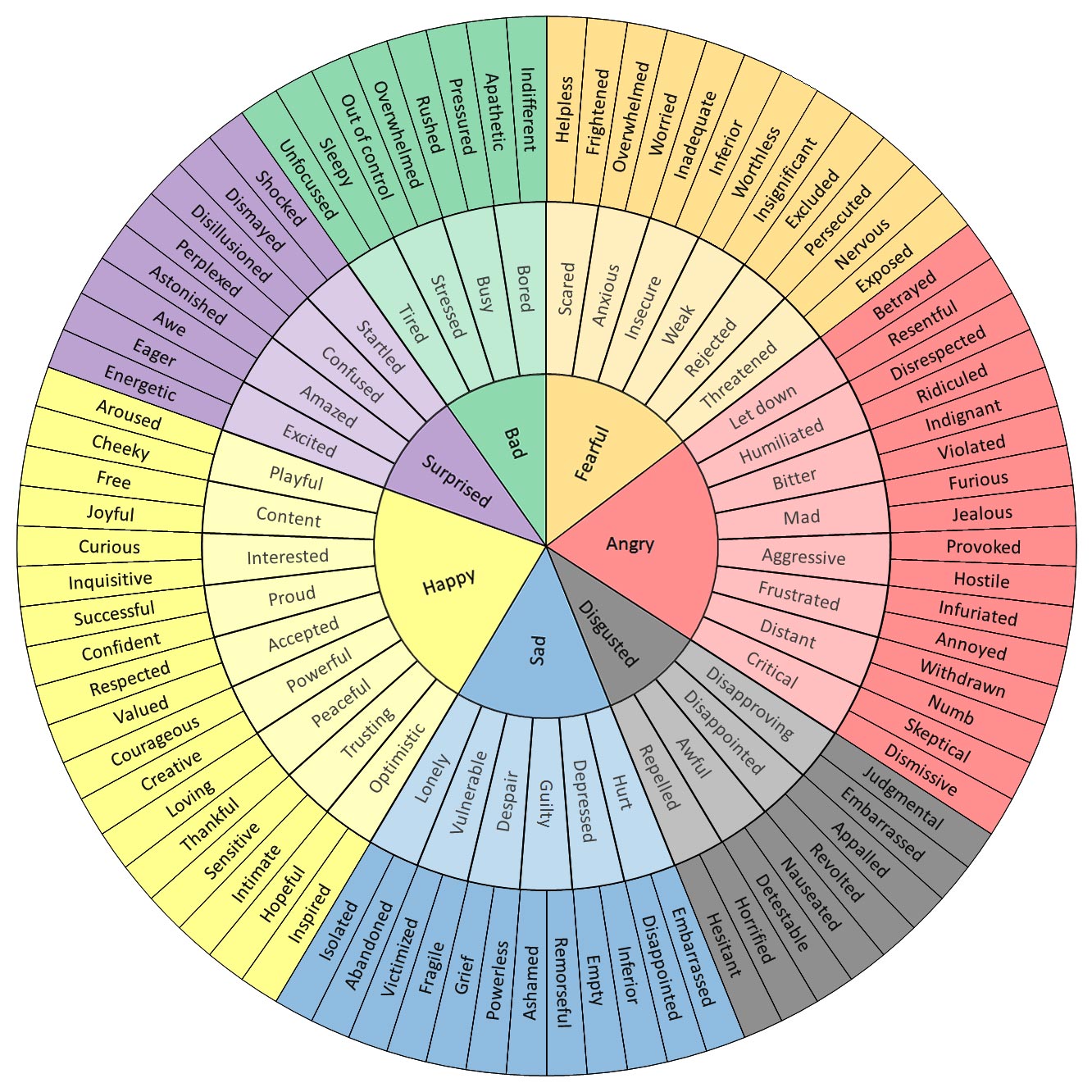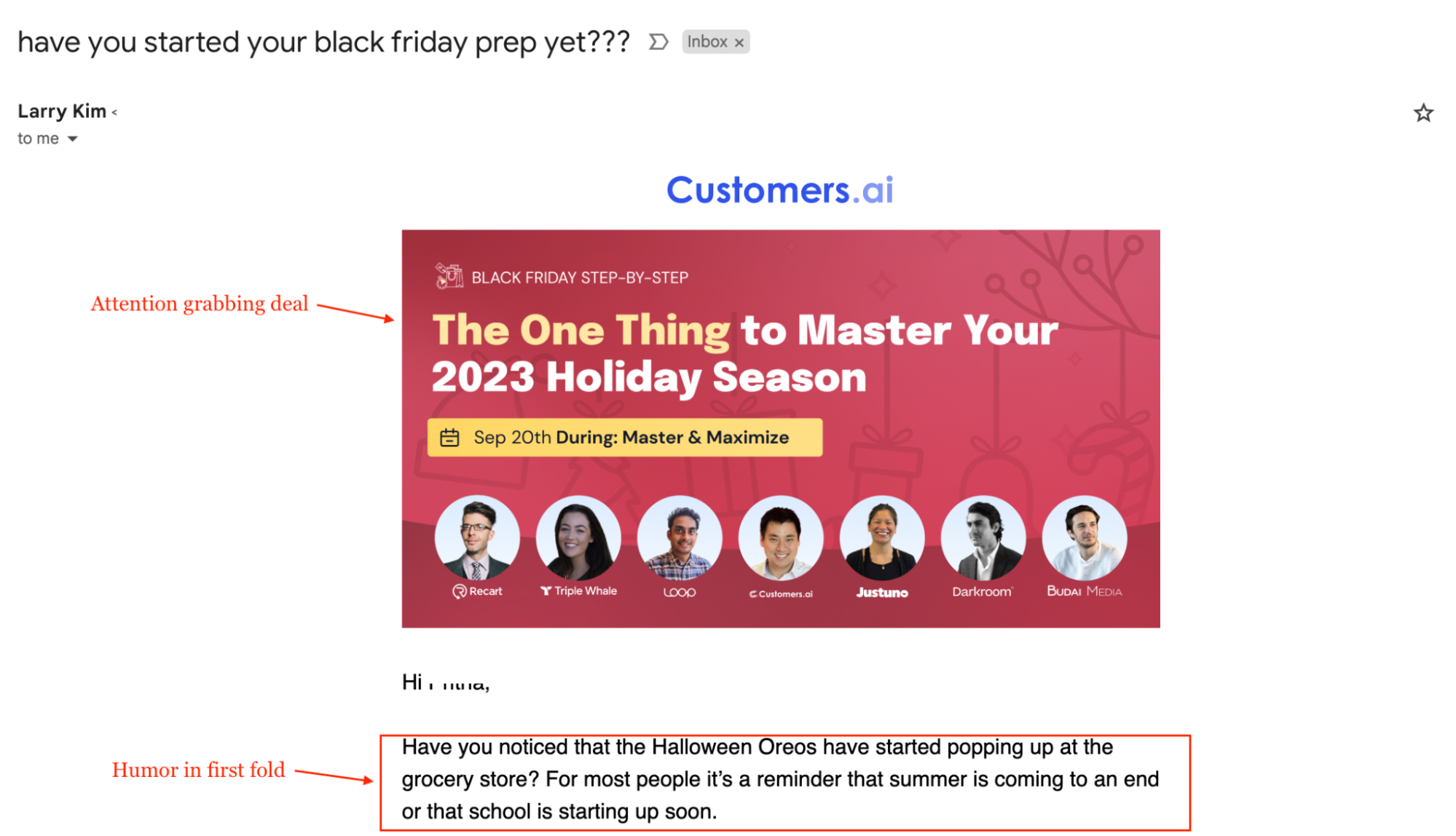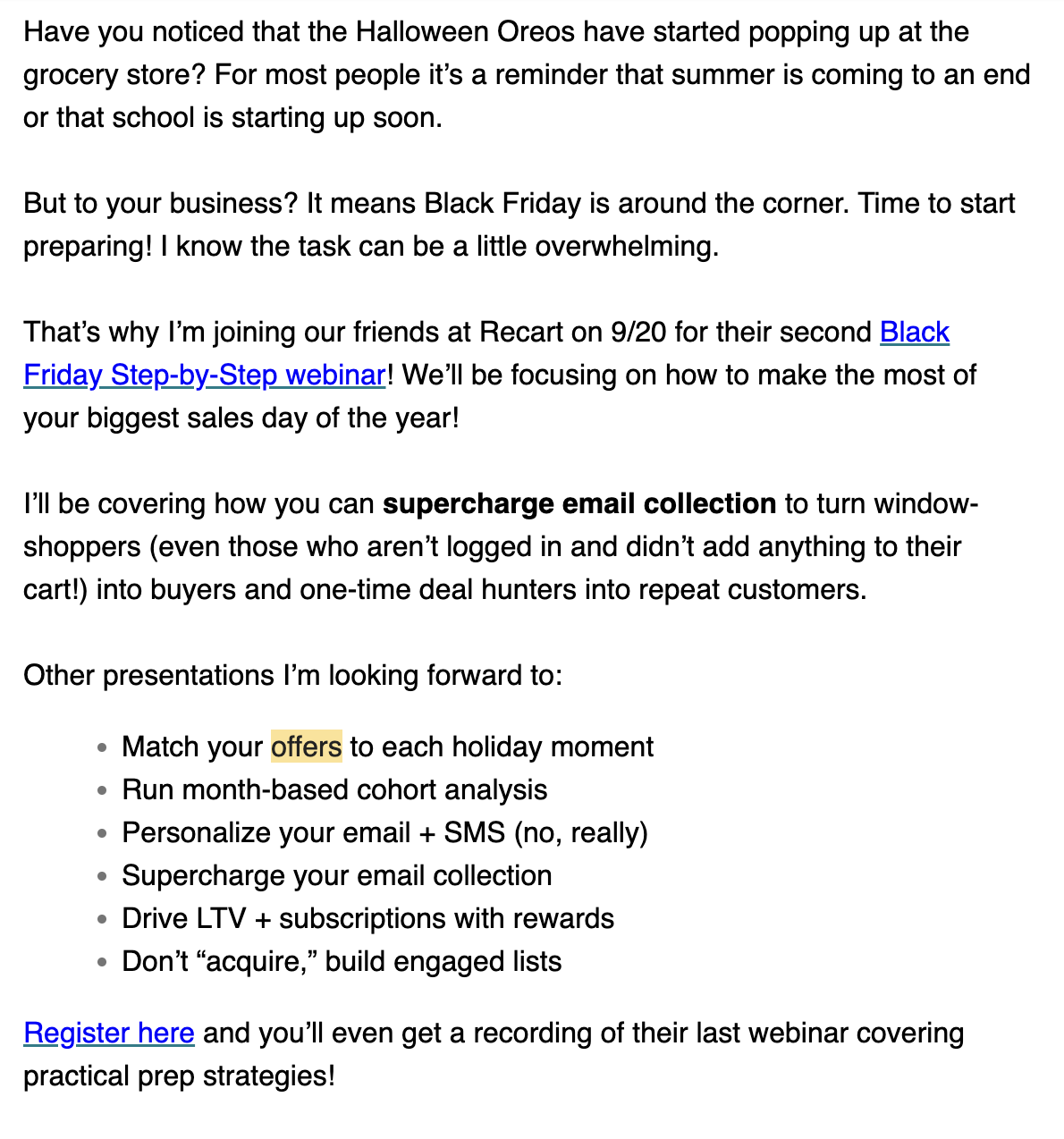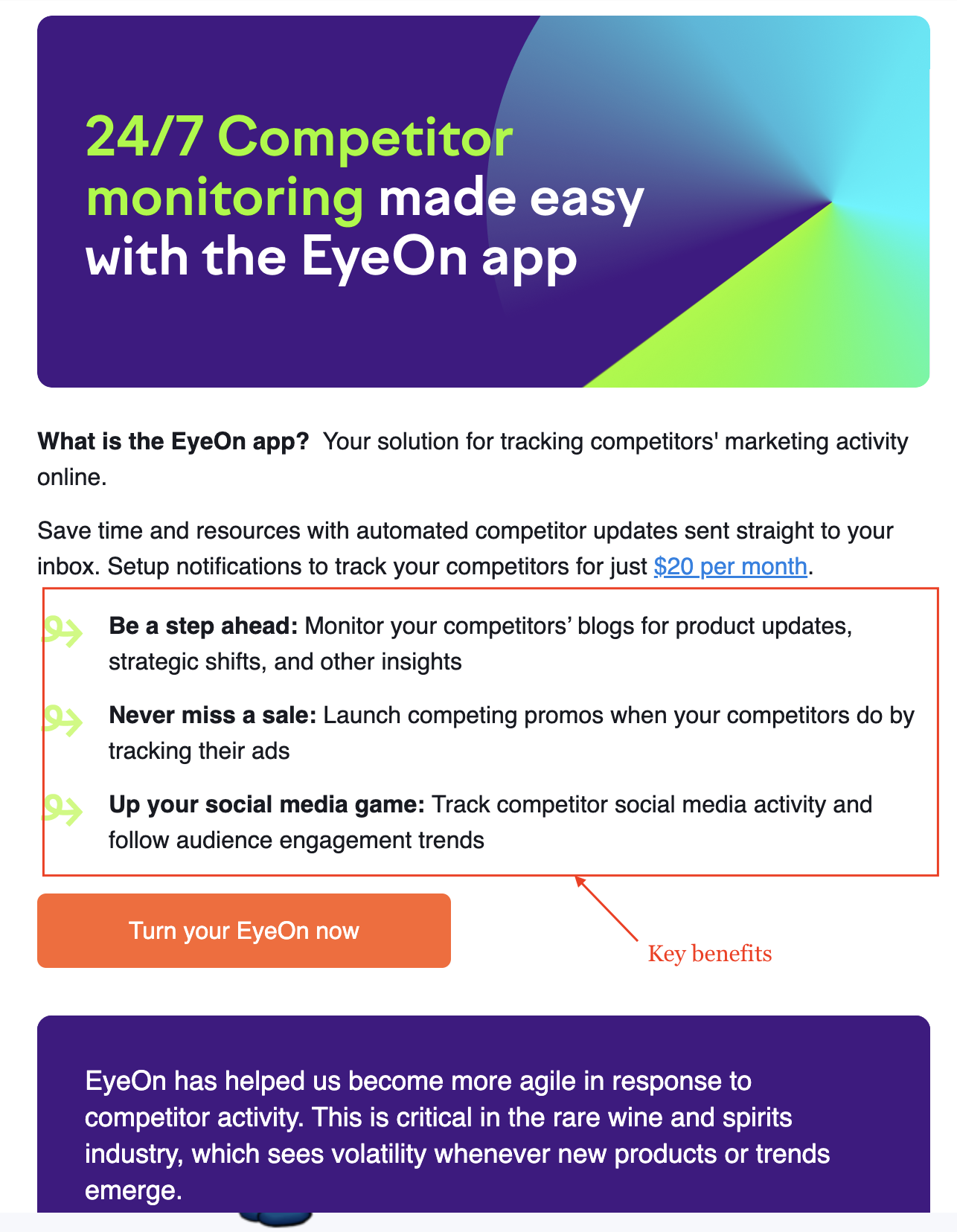
Email marketing is one of the most effective marketing channels when done right. It can weave magic for your brand, but to make that happen, you need to have a solid groundwork in place. Yes, emails can help nurture and convert. However, it is easier said than done. While there is no specific rule book for doing email marketing right, there is a specific model you can take as a backbone for your email marketing strategy. The AIDA email marketing model encompasses the four major stages a consumer goes through before making the final purchase decision. It is spelled out as Attention, Interest, Desire, and Action. As a marketer, adhering to this model means designing email content that accurately captures the intent for each stage and paves the way for the final action, i.e., to buy or try it.
Why do marketers need the AIDA model?
The impact of the AIDA model can be equated to the effect model, where one action leads to another.
AIDA model dates back to 1898 and is credited to Elias St. Elmo Lewis, who wrote an anonymous column on the three advertisement principles. Throughout his career, he found these three principles essential for an ad to succeed. His column was published in one of the most influential American magazines of the 19th century — The Inland Printer.
His column explained why a good copy has the power to attract attention, generate curiosity, and create conviction. Centuries later, his principles still stand true.
Marketers follow the AIDA model for everything, designing campaigns or structuring website content. This model can help you detect the path of your consumers that leads to the purchase decision, helping you optimize and personalize each stage for better user experience and conversion.
Implementing AIDA Email Marketing
The AIDA model has four stages, but that does not mean you have to have four different email campaigns to include the model. One email can and must have the four qualities of the AIDA model. Let’s understand this in detail.
The AIDA model, when implemented in email marketing, can be broken down as follows:
- A for Attention translates into a good subject line that can grab recipients’ attention
- I for Interest translates into generating interest with the content in the email
- D for Desire translates into piquing a desire to try the product or services through eye-catching offers, vouchers, or resources
- A for Action translates into clicking on the CTA in the email to either download a resource, join an event, try a product, or any action that the email intends to drive
Let us now understand how to incorporate the AIDA model into email marketing.
Attention (A)
The first step in AIDA email marketing is to catch the attention of your recipients. Thanks to Gmail’s inbox organization, promotional emails and offers automatically get filtered to the promotions tab and updates tab.
While users have a clutter-free inbox, it is even harder for brands to grab attention because, in most cases, the emails are not landing in the primary tab. That doesn’t mean there is no way your email will be seen. It just means you must create a subject line that instantly captures attention.
How do you do this?
There is only one way to work around this stage — make your subject line stand out. Experts recommend investing emotional quotient in your subject line. This means choosing words or phrases that evoke emotion, curiosity, or urgency. If you are unsure where to begin, you can take the help of the feelings wheel to locate an emotion you want to market throughout the four stages.
There are a few psychological pulls that you can utilize when designing your subject line.
- Personalization
Experts reveal that personalized subject lines can lead to 50% more open rates. Personalization, however, is not limited to using the first name only. Using relevant industry or job roles is also a way of personalizing the subject line.
For instance, here are two subject lines — one with a first name and one with a subject line that includes the role of a marketer.
Both pique the interest of the recipient. It is hard to argue that the one with the first name is still a winner because of the urgency it evokes, the other subject line talks about secret tips relevant for marketers like us.
Relevance
Sending out subject lines irrelevant to the email content, user interests, and needs will lead you nowhere. Create subject lines that align with the user’s interests.
Additional tip: When crafting a subject line, remember the geographic location, purchase trends, and industry. For instance, promoting summer sandals during the rainy season in Seattle might raise eyebrows.
- Curiosity
Generate enough curiosity to make users click and see what the hype is all about. For instance, subject lines like “Hey, did you miss it?” can trigger curiosity to know what it is talking about.
Simultaneously, humor in email subject lines is a great way to make users click. Some ideas can be “5 bizarre ways to capture leads” or “You can’t find this on Amazon.”
Humor, when well-intended, can work magic for your email marketing. After all, a little laugh is always good for us.
- Urgency
FOMO in email marketing is real. While everyone is rushing, they don’t want to be left out. Incorporating a sense of urgency in your email subject line can trigger the FOMO in your users. Using words like important, urgent, and alert can help you catch the attention and boost the open rates.
Example ideas – “5 Spots left, did you sign up?” or “Exclusive code for a 75% discount, offer closes in 2 days!”
For instance, here’s how Uber evokes a sense of urgency:
This example also reveals another psychological pull — offers.
Including offers in your subject line is a great way to trigger open rates. After all, who wouldn’t want to get discounts and added privileges? Determine the right strategy for your email subject line depending on the content you will share. While you are at it, make sure to keep your subject line short. A long subject line will take up a lot of space in the inbox and will not let the users see what the email is about. If you notice in your inbox, the subject line is followed by a small snippet of the content inside, giving users full knowledge of what they can expect (as shown below).

- Lose the focus of your recipient
- Not let the user have a clear idea of what you will be talking about
A common mistake to avoid: Don’t overhype your subject line. Hyping your subject line is one thing, but overdoing it will lead to cringed subject lines that might prompt your subscribers to delete it.
Interest (I)
Once your users are hooked to your subject line and get them to open your email, you use content to generate interest in your brand. The email header, or the first fold of the email, is very crucial in this stage. This is where your users will look for the hook. Give them a solid reason to read your entire message.
How to do this?
There are a few tried and tested tricks that all experts swear by.
- Craft a story:
Once again, playing on an emotional and psychological level becomes essential. Tell a story that your users can relate to and automatically connect with them on an emotional level. Stories that sound personal can evoke interest and make the user continue reading your message.
- Align with your subject line:
Let’s assume you use a humorous subject line or a satirical approach to the subject but become all serious and monotonous on the inside, your email will just fall flat. Your inside content did not continue with the mood, and eventually, your users just ditched your email mid-way.
- Use humor:
Humor does not mean you have to make your users roll on the floor laughing. It also means sharing content that will make them smile, break the ice, and get them to trust you as a brand. A little humor goes a long way in brand recall.
- Include facts and figures:
Rooting your email content into facts and figures can help establish brand authority because you present well-established, thought-provoking data.
Create content that makes your users think “I like it.” Be persuasive and engaging. This stage is all about holding your users with a hook.
For example, take a look at the first fold of this Black Friday Webinar from Larry Kim, Co-founder, Customer.ai
- The email header highlights the key takeaway of this email, generating interest in what else it offers. It aligns perfectly with the subject line that does not talk about learning but simply generates urgency in asking if you are already preparing for Black Friday.
- The content in the first fold uses humor to generate interest and make the users scroll down. You cannot help but smile slightly when reading the first line.
If you look at the entire email that follows, it tells a story on why Black Friday may be necessary for your business and eventually tells how you can make the most of it with the brand.
A common mistake to avoid: Don’t stretch your email unless you have important information that has to be there. Long emails are unhealthy when trying to hold your users’ attention. No one likes endless and meaningless scrolling.
Desire (D)
This is where your users are in the “I want this” stage. You have generated interest in your email content and evoked a desire to click on the CTA and explore more on the offer you’ve talked about.
Yet there is time before the final click actually happens. Desire is the stage when you need to inspire your users to take the next course of action. This is where you clear all doubts and make the user fully trust you to take the plunge.
How do you do it?
- Be vocal about the benefits
This doesn’t mean you don’t talk about the features of your product or the core USP of your services. This simply means putting your user in the center. While highlighting your features or services, tell explicitly the core benefits the user will enjoy upon joining that program or signing up for a demo. Give a holistic view of what I will get so there is no place for any second thoughts. This is where you convince your users that their choice of going forward with your brand is absolutely right.
For example, PetLab Co.’s CEO and co-founder Chris Masanto has learned, “By clearly and persuasively highlighting the advantages and value of your offering, you can capture the recipient’s attention and pique their interest. As you continue to nurture their interest by emphasizing how these benefits meet their specific needs or solve their problems, you cultivate a desire for your product or service. This desire acts as a powerful motivator, prompting the recipient to take the desired action, such as making a purchase or clicking a link, ultimately driving the success of your email marketing campaign.”
- Add exclusive offers
Everyone likes exclusivity. When it comes in the form of exclusive benefits, your users will love to try your product or explore your services. Rewards can be a powerful way to trigger the desire to try it out. Offer joining benefits or early bird discounts to get things rolling.
Your task in this stage is to make your users feel confident about your offer and brand. Be it security assurance or shipping costs, make sure there are no roadblocks in the decision-making.
For instance, check this SEMRush email. It lists the key benefits of the EyeOn App, followed by a brief of what it does. It uses the subject line “Uncover your competitor’s marketing strategy” and offers a solution to do that just right. A classic example of evolving the desire to try the app for anyone looking to master competitor marketing. The email content has all the details you need — what to expect in the app, the pricing, and the key benefits.
A common mistake to avoid: Don’t leave out important information, especially information on pricing or terms and conditions applicable to the email. Leaving out such details will not let your users trust you, nullifying your whole attempt.
Action (A)
This is where you guide your users in taking the next step. You have generated interest and the desire to explore your product or services. The last step is to get the users to perform the desired action — by clicking on the CTA.
How do you do it?
- Don’t overcomplicate your CTA
This is no rocket science and shouldn’t be overly complicated. Create a CTA that clearly states the action rather than beating around the bush.
Many marketers try to get over-creative with the CTA. However, contrary to popular belief, you don’t need to have heavy words on your CTA. A simple sign-up or subscription will do the job.
A common mistake to avoid: Don’t include unclear CTA. It should have clear, action-driven text that tells exactly what it means. If your CTA text confuses your users, it will lead to no actions. Similarly, having multiple CTAs for different actions in one email can jeopardize your effort. Emails can have more than one CTA, but it should be the same CTAs with the exact text, format, and font.
Now that you know how to prepare your email campaigns based on the AIDA, let’s discuss data-driven optimization of each stage.
Steps to Optimize the AIDA Stages With Data
Measuring your email campaigns is important to understand how well you have incorporated the AIDA model. Looking at the data will help you analyze your:
- Email open rates
- In-email click rates
- Most clicked links
- Conversion rates
- Bounce rates
- Unsubscribe rates
These metrics will help you understand if your email campaigns are generating and triggering actions as expected.
What can you do?
To streamline everything, you must start by looking up the email performance. Based on the data at hand, you can start optimizing each stage. Here’s how to optimize.
- Measure the success of your email campaign:
Your email campaign’s success is usually the percentage of users that moved to the final action stage and clicked on the CTA to sign up, subscribe, or any other action the email intended to facilitate.
For instance, when reading the data, low open rates mean your subject line failed to evoke interest. Similarly, a good open rate but no actions will mean the content failed to pique an interest. Use data and analyze which stage requires more optimization.
- Use A/B testing to test out changes:
Once you detect where you are faltering, finding an instant solution to fixing it is hard. A/B Test ideas and changes in your emails before you send a whole campaign to the entire list.
Testing email variants against a static template can help you envision each change’s impact and decide which version drives the closest result you want to achieve with your AIDA email marketing campaign. It is also a proven way to analyze which aspect of the AIDA model requires change or update in your email campaign and how your users will engage.

Limitations of AIDA Email Marketing
Using the AIDA model as the backbone for your email campaigns is a great idea. However, before you start implementing the model, it is essential to know the drawbacks of this model.
-
Doesn’t account for the non-linear buying journey
The model works perfectly for a linear buying journey where the user moves from one stage to another – more in a straight-line format. However, not all buying decisions are linear.
For instance, consider this situation:
User A likes the solutions offered by company X but finally purchases from company Y. However, their needs are unmet after a while, and A eventually returns to company X.
This buying journey is not linear. Here, the AIDA model does not fit.
Similarly, there are times when users have the desire for a particular solution before knowing about it. This means the desire and action stage appears before the attention and interest stage — disrupting the AIDA model.
-
Ineffective for short buying cycles
Email marketers should also be aware that a user can go through all four stages at one go instead of gradually moving from one to another. Examples include emergency purchases or super short sales cycles.
Email marketing is unnecessary because the user has already purchased without crossing the awareness stage.
-
Mostly limited to first-time purchase
The model is applicable when you are converting subscribers into paid users. It remains the least effective in retaining users. AIDA may not be applicable for returning users.
For instance, if you have a loyal user who frequently engages with your email campaigns and is paid, the AIDA model does not fit this user. Such users don’t need added elements to trigger engagements because a brand-to-user relationship is already made here. AIDA is mostly applicable to new users who are still in the process of trusting a brand.
-
Too simple in modern buying stages
The concept reads well on paper. It is also a straightforward approach to tailoring email campaigns. However, modern buying stages have evolved with many additional factors contributing to the buying decision.
Users have more resources to validate, research, compare, and then decide what is best. Email marketing alone with the AIDA model cannot be sufficient if you look at the bigger picture.
AIDA Email Marketing: Conclusion
Email marketing, when done right, can show an increase in engagement rates. Despite the drawbacks, the AIDA model is like a vintage framework that still rings true for marketers trying to convert subscribers into happy leads. Implementing the AIDA framework is like using an age-old tried and tested formula. You can tweak it based on your product or services, user intent, and email marketing goals.

 Relevance
Relevance


